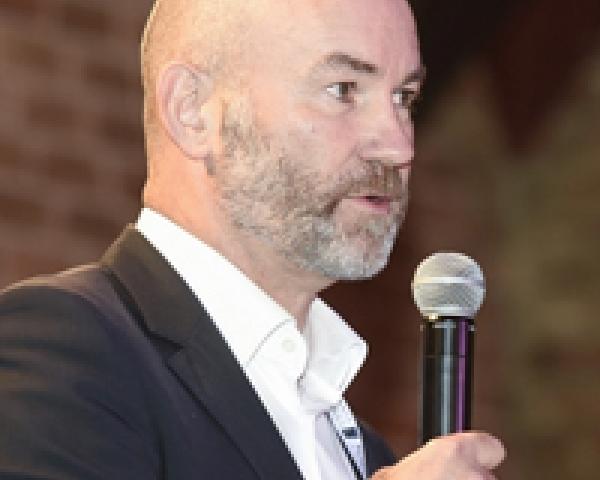At year end, in our personal lives, we reflect on and plan strategies relating to our health, wealth and family. In our business lives, we reflect on and plan strategies for our sales, costs and overall business direction. For writers, consultants and the like, we write predictions on the areas where we specialize.
I’ve read a lot of these top 10 predictions in the past. I always think to myself: "Gosh, how do these people make such predictions? I hate doing crystal ball exercises where one is taking a shot in the dark…I’m not sure if I could ever do one."
So much for that.
Here are my predictions from last year. Most were on point: 2017 was the year that insurtech, at least the word, became everyday nomenclature that we all have grown to love.
While the hype increased, so did the substance. We have seen an online-only insurer do an IPO (Zhong An), investment pour into insurtech startups like it’s running out of style and more insurtech conferences, blogs, podcasts and events than one can handle.
Will the train keep rolling? Or will the hype subside? My 10 predictions this year are based on some self-selected categories that I think affect all areas of insurance and insurtech. I have also included links at the end of this article to other 2018 predictions that I think are great reads.
Prediction #1 – Defining Customer Engagement
There are many insurtech solutions that have helped to enhance the traditional touch points of the customer value chain: prospecting, quoting, purchasing policies, servicing policies, claims.
Wearables, sensors and telematics have opened a host of ways to engage and personalize the customer experience.
Most notably and importantly, this has helped with pricing and preventative care. These new solutions allow carriers and customers to have more real-time pricing, which can be beneficial for both sides. For preventative care, the opportunities are only now being explored.
In addition, I’ve heard and read a lot that customers want more engagement from their carriers. Receiving notifications from your carrier on how to live better lives, in an effort to not have as many claims, could be great. But how much is too much?
I think this question will be tested this year. Engagement will still be key. The most important customer engagement point for insurance is the point of claim. If this cannot be improved, then policyholders are going to tell carriers to cool it with the other engagement.
Prediction #2 – Insurtech Buzzwords
2018 will be underpinned by these two buzzwords this year – "API" and "ecosystem." I think these two buzzwords/themes make so much practical sense for our industry.
On the API (application programming interface) side, we have seen this trend from startups like Qover and Lemonade, both of which have an open API to enable traditionally non-insurance platforms to offer insurance.
As I will mention below in Prediction #9, what has made Zhong An so successful is the power of its partnerships. From a distribution perspective, partnerships just make sense.
How about from an operational perspective? One of the scariest word that can be uttered when it comes to an innovation implementation is "integration."
See also: Top 10 Insurtech Trends for 2018
Why?
Because integration of a solution with another solution takes time. The more that insurance carriers can have API-enabled policy admin systems and startups can build API-enabled value chain solutions, the easier it will be to do implementation with a carrier and start seeing benefits quickly.
On the ecosystem side, we at Daily Fintech
have recently covered some of the remarkable insurance ecosystems that have been built in China with Ping An.
Insurance ecosystems excite me the most -- anything that can bring the insurer, insured and provider together, for treatment and transactions. Further enhancing the ecosystem proposition is the ability of preventative care through the use of wearables, telematics, smart sensors and IoT.
Insurance ecosystems will be one of, if not the biggest, contributors to an improved customer experience.
Prediction #3 – Specific Technology
The two biggest technologies I see having an impact on the insurance industry, in 2018 and beyond, are blockchain and AI.
Again, both just make sense.
Blockchain has so many use cases for insurance. The most practical one for me is a smart contract. Looking at the ecosystem, if all parties can view the same information from a contract, in real time, the whole claims process will be simplified. This would be for almost all lines of insurance.
AI is the same. Again, looking from a practicality standpoint, I see two forms – chatbots and data analytics.
Chatbots will bring a better customer experience to both customers and distributors alike. I have been studying different use cases on chatbots since my article a few weeks ago on insurance agent enablement. I can see chatbots helping in:
- General customer service questions/help – this will free up time from call centers and agents/brokers to focus on more meaty issues
- General questions from agents/brokers – how many times do agents/brokers call you just to confirm how a certain product works? Chatbots can help with that
- Direct-to-consumer (D2C) sales
- Claims
- And more
I’m not the only one who is bullish on AI and chatbots.
Just ask Softbank and Lemonade.
For data analytics, someone needs to sift through all that data that an insurer has (including the new sets provided by wearables, sensors, telematics and other third-party sources). Someone will need to identify from that data when there is appropriate time for a) cross-sell, b) preventative care, c) wellness tips, d) positive reinforcement for good behavior, e) identify fraudulent claims, etc…
That "someone" will be AI.
Both blockchain and AI are prevalent in today’s market and are currently being explored more and more within insurance (some recent examples being
Nationwide,
AXA and
E&Y).
I see these two technologies as being the most commonly used by carriers in 2018 and beyond.
Prediction #4 – Lines of Business/Risk Covers
Three areas to look at in this prediction are:
- Traditional lines of business/risk cover – i.e. life, health, home, auto, commercial, etc.
- New lines of business/risk cover – i.e. cyber, gig economy, sharing economy, etc.
- New business models
When it comes to D2C for the traditional lines of business, a lot of the new insurtech entrants/startups have been in the personal auto and home lines, with some in term life and health. I see more entrants in the life and health business, possibly in the annuity space, too.
For new lines of business, I see an increasing focus on the ones I mentioned above (cyber, gig/sharing economy), as well as some new risk covers/business models coming out. I think there will also be an increased focus on more time and usage-based insurances, as well, with Slice leading the way by "
removing the annual policy." Insurance for bitcoin may also be a thing.
I also see the emergence of some new business models, like
Laka,
Insurepal and
Getsafe. Laka just went live with bicycle insurance, which collects premiums in arrears and up to a cap. Insurpal is insurance using social proof, blockchain and cryptocurrency. Getsafe will be launching a multi-line single policy. It has just gone live,
starting with liability Insurance.
Prediction #5 – Areas of the Value Chain (B2B2C)
A lot of the early insurtech innovation for carriers has been related to distribution, product, marketing/customer engagement and claims. I still see these areas being focused on (especially claims for life and health), with an added focus on cyber security and fraud-related initiatives.
Prediction #6 – Geography
The U.S., U.K. and Germany have been the main areas of insurtech over the last couple of years. China (driven by Zhong An and Ping An) has helped Asia become an insurtech leader.
On the geographical front, I still see the U.S., U.K., Germany and China "doing their thing" when it comes to insurtech.
I see Zhong An and Ping An expanding into other parts of Asia (the world?), as can be seen
here for Zhong An and
here for Ping An. Looks like this is a 2018 and beyond trend for some of the financial heavyweights in China.
Ant Financial just signed a memorandum of understanding (MOU) with Standard Chartered, too.
I also see an explosion of growth in some of the emerging markets, namely Africa, the Middle East and Latin America. The technologies that are being created will help to benefit the emerging markets by giving them low-cost access to insurance that they may not have had before. These are big populations with massive protection gaps. Insurtech innovation is ripe for the picking in these areas.
As I was working on this article earlier this week, I came across
this piece of news, in which Allianz invested $96.6 million in mobile insurance startup BIMA.
Prediction #7 Investments
According to the
Q3 quarterly briefing from Willis Towers Watson/CB Insights, through Q3 2017, total investments in insurtech were about $1.5 billion. There has been a lot of activity in Q4, and I would expect the total for 2017 to be somewhere between $2 billion and $2.5 billion.
I think investment will remain high but will come from some different sources.
I see more startups trying to raise money via initial coin offering (ICO) (depending on regulation).
I also see more insurers taking an active role in investing. Many insurers have set up their own investment arms over the past few years. Now that they’ve been able to do more homework and research in this space, I see them investing more heavily in and possibly acquiring startups. It may ultimately make more sense for the ones with bigger balance sheets to take on a startup within their business rather than having an annual recurring/per-user expense.
Additionally, I think there is an interesting dynamic of an insurer working with a VC-backed startup. Typically, the payback periods for these VCs range from anywhere between three and five years. However, insurance carriers have an annual target to hit, which adds pressure to show a return on innovation quickly. I’m not sure if startups fully understand this dynamic or if it has started to play out yet. This is another reason I see insurers taking a more active role on investing; then they can ensure the startup is fully focused on them, not paying back their investors.
Prediction #8 Regulation
Regulators have been taking a more active role in understanding insurtech. 2018 will be the year that they start homing in. I see there being more regulation in general that relates to customer data protection. The increased use of wearables, sensors and telematics will call for it. By the same token, I see more regulators coming out with rules on how the increased data can be used for pricing purposes.
Prediction #8.1 – Perhaps call this a wish list item: The U.S. will get its first regulatory sandbox. I’m not sure where it would be, but I would say that top candidates would be New York, Connecticut, Massachusetts, Iowa and California.
Looks like this conversation is moving in the right direction.
Prediction #9 – Big Tech
This has been a hot topic lately within the insurance community, specifically with rumors as it relates to Amazon.
In China, we already see big tech with Tencent and Ant Financial (Alibaba) being major shareholders in Zhong An and Tencent also setting up an insurance platform with WeSure.
Looking at the West, specifically when it comes to GAFA (Google, Apple, Facebook and Amazon), I think Amazon (and perhaps Apple) makes the most sense. Why is Zhong An so successful? Aside from their tech capabilities, it is their partnerships that make them thrive. The company's insurance is plugged into any one of its partners (via API), making the process seamless and a no-brainer for customers.
Trend 2 from the
Digital Insurance Agenda’s 2018 predictions is "invisible insurance": "You purchase a product, and there is already an insurance embedded in that."
I was speaking with a friend about this recently. He has a few blue chip U.S. insurance stocks that he said have not been performing as well as he’d like. I told him to look out east to Zhong An. He asked what makes them unique. My reply was, "For one, they embed insurance for just about everything that is bought through Alibaba’s platform." He stopped me there and said, "That’s a business model I understand; what’s the symbol?"
Amazon is the only one of GAFA that already has a very established product purchase process with its customers. They know about their buying behaviors and can offer insurance for new risks based on the things they offer through their site. It would be easy for them to have an online store with stand-alone insurance products, as well.
Apple would be the runner up. It also has an established purchasing process via its app and iTunes store. With all of its investment in wearables and knowledge of how to embed its own line of Apple products in one’s life (i.e. ecosystem), Apple could be a threat in the insurance space.
Google has information on its customers but had a bad insurance experience with Google Compare. Facebook has a lot of information on its users and knows a thing or two about ecosystems, too. However, I don’t see it offering insurance (though I do see Facebook Messenger and Facebook Marketplace as some potential enablers for the insurance value chain).
Here are two good thought pieces on why
Amazon and
Apple, written by Dr. Robin Kiera and Dustin Yoder, respectively.
See also: Insurtech: Breaking Down the Walls
Prediction #10 Macroeconomic
When I look at the investments, focus and excitement in insurtech, part of me feels that it also goes along with the overall gains we have seen in the global economy. We often talk about the amounts of money that have gone into insurtech startups, but look at the spending on conferences, research, consultants, events and the like, too. There is a lot of money pouring into this subject.
However, will that change if the markets take a turn for the worse?
As Brexit hasn’t completed yet, neither have its global effects. In the U.S., effects of the recent repeal of net neutrality and the new tax plan are also unknown. Tensions could not be higher between North Korea and the U.S./world. Bitcoin/cryptocurrency are currently being used as a speculative asset versus a different payment method.
Couple any major macroeconomic event with the recent surges in drastic weather around the world, and we could see a major change in plans/focus from insurers on their innovation initiatives as well as an outpouring of investment into new, unproven startups.
Bonus Prediction – Global collaboration will continue to be the real driver of change.
I can’t end the predictions list with a negative point on macroeconomics (though, if you couldn’t tell, my overall outlook on the macroeconomy is a bit more bearish).
Regardless of what happens on the macro level, I think the real drivers of change are going to be all of us. By all of us, I mean people who are reading this, who work in this space and who work on innovation and insurance every day. I have seen so much cross-border collaboration personally and through my daily readings in the past year.
The excitement of being able to innovate in an industry that has been around for hundreds of years and is worth trillions of dollars is exciting to people both new and old to the industry. People are flying and getting flown all over the world just to hear or speak about what is happening at the other end of the world. Regulators are signing MOUs on fintech/insurtech almost weekly, it seems! Startups are getting opportunities to present their solutions to carriers in different countries all the time. It is truly remarkable and will be exciting to be a part of.
You can find the original article here.
Other 2018 predictions from others – in no specific order
Predicting innovation and transformation for insurance in 2018 – Insurance Thought Leadership
InsurTech Year in Review 2017 – Eos Venture Partners
10 Insurtech trends at the insurance crossroads 2018 – Rick Huckstep
Top 10 Insurtech Trends for 2018 that set the Digital Insurance Agenda – Roger Peverelli and Reggy de Feniks
2018 predictions: Insurtech hits its stride- KPMG
2018 Insurance Industry Outlook – Deloitte
What Trends Will Shape ‘Fintech’ In 2018?- Seeking Alpha
Insurance industry predictions 2018 – Clyde and Co.
Security in InsurTech – Predictions for 2018 – Manta Labs
Gartner’s 10 Technology Predictions for 2018: The Good, the Bad & the Obvious If by this point you’ve tired of hearing about technology vulnerabilities, this one is different (but also mostly the same, as I’ll get to a bit later). For one, this isn’t a software bug like you might find in your operating system or browser. Nor is it a physical defect in the processor itself. Meltdown and Spectre aren't really "bugs" at all. Instead, they represent methods to take advantage of the normal ways that many processors work for the purpose of extracting secrets and data. More important, though, is the magnitude of the impact. By comparison, the WannaCry and NoPetya ransomware attacks wreaked global havoc exploiting vulnerabilities that are believed to have affected ~400,000 computers versus the estimated 2 billion computers susceptible to Meltdown and Spectre.
See also: New Approach to Cyber Insurance
The timing of these events could hardly come at a more interesting time for the cyber insurance industry. Only a few days prior, in an interview with the Financial Times, Christian Mumenthaler, CEO of Swiss Re, one of the world’s largest reinsurers, wisely questioned the very insurability of cyber risk due to the possibility for accumulation risk—the possibility that a cyber event could hit many insurance policyholders at the same time, by the same attack, resulting in huge potential claims payouts.
Sound familiar?
Cut the FUD
As we’ve discussed before, we now live at a time where a cyber attack, technology failure or human error can cause everything from data theft to supply chain disruptions, hospital shutdowns, hotel room lockouts, blackouts and even nuclear centrifuge explosions—literally the entire spectrum of known risk. That these events could even theoretically occur on a massive scale, and all at once, is certainly cause for alarm—it would indeed pose a serious accumulation risk and eliminate one of the core pillars of insurability.
However, it would be mistaken to assume that such a scenario, as in the case of Meltdown and Spectre, is anything more than FUD (fear, uncertainty and doubt). This is hardly to say that the discovery of these security flaws is much ado about nothing. On the contrary, they pose a very real threat and may well open the door to serious cyber attacks. However, as with the headline-grabbing ransomware attacks of 2017, there are many reasons to believe that subsequent losses will be relatively contained.
[caption id="attachment_29663" align="alignnone" width="400"]
If by this point you’ve tired of hearing about technology vulnerabilities, this one is different (but also mostly the same, as I’ll get to a bit later). For one, this isn’t a software bug like you might find in your operating system or browser. Nor is it a physical defect in the processor itself. Meltdown and Spectre aren't really "bugs" at all. Instead, they represent methods to take advantage of the normal ways that many processors work for the purpose of extracting secrets and data. More important, though, is the magnitude of the impact. By comparison, the WannaCry and NoPetya ransomware attacks wreaked global havoc exploiting vulnerabilities that are believed to have affected ~400,000 computers versus the estimated 2 billion computers susceptible to Meltdown and Spectre.
See also: New Approach to Cyber Insurance
The timing of these events could hardly come at a more interesting time for the cyber insurance industry. Only a few days prior, in an interview with the Financial Times, Christian Mumenthaler, CEO of Swiss Re, one of the world’s largest reinsurers, wisely questioned the very insurability of cyber risk due to the possibility for accumulation risk—the possibility that a cyber event could hit many insurance policyholders at the same time, by the same attack, resulting in huge potential claims payouts.
Sound familiar?
Cut the FUD
As we’ve discussed before, we now live at a time where a cyber attack, technology failure or human error can cause everything from data theft to supply chain disruptions, hospital shutdowns, hotel room lockouts, blackouts and even nuclear centrifuge explosions—literally the entire spectrum of known risk. That these events could even theoretically occur on a massive scale, and all at once, is certainly cause for alarm—it would indeed pose a serious accumulation risk and eliminate one of the core pillars of insurability.
However, it would be mistaken to assume that such a scenario, as in the case of Meltdown and Spectre, is anything more than FUD (fear, uncertainty and doubt). This is hardly to say that the discovery of these security flaws is much ado about nothing. On the contrary, they pose a very real threat and may well open the door to serious cyber attacks. However, as with the headline-grabbing ransomware attacks of 2017, there are many reasons to believe that subsequent losses will be relatively contained.
[caption id="attachment_29663" align="alignnone" width="400"] Hierarchy of Cyber Security[/caption]
To understand why, it’s helpful to understand the hierarchy of cyber security. At the base are vulnerabilities in all their forms (software, humans, even processor architectures). That the base is bounded is misleading because, in reality, there are an infinite number of vulnerabilities that can and will exist. However, vulnerabilities only matter if they pose a threat to an organization. This combination of threat and vulnerability is generally the risk an organization faces. Even then, threats don’t matter unless someone proceeds to attack you. And that someone at the top of the pyramid is, 10 out of 10 times, a human actor. Why does this matter?
It matters because cyber attacks are really just forms of cybercrime, which itself is merely a form of crime—it is the people, not the form, that matter. There are costs for criminals to launch attacks, and not just the risk of being caught (which for the moment is abysmally low). Criminals require time, infrastructure and money to fund their enterprises, enumerate targets and move through the kill chain toward the realization of their desired outcomes. All the while they must also factor in the uncertainty of achieving the outcome.
Hierarchy of Cyber Security[/caption]
To understand why, it’s helpful to understand the hierarchy of cyber security. At the base are vulnerabilities in all their forms (software, humans, even processor architectures). That the base is bounded is misleading because, in reality, there are an infinite number of vulnerabilities that can and will exist. However, vulnerabilities only matter if they pose a threat to an organization. This combination of threat and vulnerability is generally the risk an organization faces. Even then, threats don’t matter unless someone proceeds to attack you. And that someone at the top of the pyramid is, 10 out of 10 times, a human actor. Why does this matter?
It matters because cyber attacks are really just forms of cybercrime, which itself is merely a form of crime—it is the people, not the form, that matter. There are costs for criminals to launch attacks, and not just the risk of being caught (which for the moment is abysmally low). Criminals require time, infrastructure and money to fund their enterprises, enumerate targets and move through the kill chain toward the realization of their desired outcomes. All the while they must also factor in the uncertainty of achieving the outcome.
 Exploits for security flaws can accomplish many things, but few produce cash.
Every step in this chain takes effort. Although cyber criminals are becoming more numerous and sophisticated, they are still limited in how much damage they can cause and profit they can reap. As a result, even though an entire population may be vulnerable, the economically optimal strategy for an attacker is nonetheless to focus on a relatively small set of victims.
Cyber insurance is dead. Long live cyber insurance!
Although there is little doubt that certain accumulation scenarios exist, limiting the insurability of certain cyber risk exposures, this is not one of them. Absent an expertise in hacking and cybercrime—and the economics thereof—it is no surprise that many insurers offering cyber insurance struggle to understand, much less manage, accumulation risk. It’s high time they woke up.
See also: Cyber Insurance Needs Automated Security
Insurers must come to realize the role that insurance plays in protecting companies from all forms of risk that accompany the digitization of everything. It also means thinking about cyber insurance as more than just coverage for data breach and response. The most recent devastating attacks have resulted in business and supply chain interruption, and even physical property damage. It is hardly a stretch to imagine exposure to nearly every other form of known risk, including bodily injury or even pollution. Of course, with new exposures come new challenges in underwriting and management of accumulation.
Overcoming these challenges won’t be easy. It will mean using data in an entirely novel way to not only assess the risk of an individual policyholder, but an entire population of policyholders, and doing so on a continuous basis. It will also mean measuring diversity, and particularly technological diversity, to manage accumulation in novel ways. How many insurers today know which cloud service provider their clients use, much less which versions of software they are running? Or whether their clients’ passwords have been compromised in a third-party data breach? If you don’t know these answers, you’re in trouble. Gone are the days when accumulation will be managed by geography, industry and revenue size. Are we up to the challenge?
Long live cyber insurance.
Exploits for security flaws can accomplish many things, but few produce cash.
Every step in this chain takes effort. Although cyber criminals are becoming more numerous and sophisticated, they are still limited in how much damage they can cause and profit they can reap. As a result, even though an entire population may be vulnerable, the economically optimal strategy for an attacker is nonetheless to focus on a relatively small set of victims.
Cyber insurance is dead. Long live cyber insurance!
Although there is little doubt that certain accumulation scenarios exist, limiting the insurability of certain cyber risk exposures, this is not one of them. Absent an expertise in hacking and cybercrime—and the economics thereof—it is no surprise that many insurers offering cyber insurance struggle to understand, much less manage, accumulation risk. It’s high time they woke up.
See also: Cyber Insurance Needs Automated Security
Insurers must come to realize the role that insurance plays in protecting companies from all forms of risk that accompany the digitization of everything. It also means thinking about cyber insurance as more than just coverage for data breach and response. The most recent devastating attacks have resulted in business and supply chain interruption, and even physical property damage. It is hardly a stretch to imagine exposure to nearly every other form of known risk, including bodily injury or even pollution. Of course, with new exposures come new challenges in underwriting and management of accumulation.
Overcoming these challenges won’t be easy. It will mean using data in an entirely novel way to not only assess the risk of an individual policyholder, but an entire population of policyholders, and doing so on a continuous basis. It will also mean measuring diversity, and particularly technological diversity, to manage accumulation in novel ways. How many insurers today know which cloud service provider their clients use, much less which versions of software they are running? Or whether their clients’ passwords have been compromised in a third-party data breach? If you don’t know these answers, you’re in trouble. Gone are the days when accumulation will be managed by geography, industry and revenue size. Are we up to the challenge?
Long live cyber insurance.























